Science
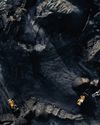
How It Works UK
HOW COAL IS MINED
Extracting the fossilised remains of prehistoric animals can be a dangerous business – for people and the environment
2 min |
Issue 202

How It Works UK
Iguanas sailed 5,000 miles on rafts 34 million years ago
Around 34 million years ago, iguanas undertook the longest known transoceanic trip of any terrestrial species, sailing one-fifth of the way around the world from North America to set up home in Fiji.
2 min |
Issue 202

How It Works UK
HOME GADGETS EXPLAINED
We often take the technology that keeps our homes running for granted, but here's how they actually work
3 min |
Issue 202

How It Works UK
3.47-billion-year-old meteorite crater discovered in Australia
Scientists in Australia have discovered the world’s oldest known meteorite impact crater, thanks to pristine structures created by the blast in the rock.
2 min |
Issue 202

How It Works UK
The ocean's 'heart' may be slowing down
Melting Antarctic ice is slowing Earth's strongest ocean current.
2 min |
Issue 202

How It Works UK
MONSTERS OF THE DEEP
Dive deep below the ocean's surface to discover razor-mouth viperfish, animaleating sponges and other fearsome and fascinating creatures that lurk in the midnight depths
2 min |
Issue 202
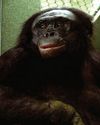
How It Works UK
Genius ape who could understand English and play Minecraft dies
Kanzi, a male bonobo with an advanced aptitude for language, has died at the age of 44, according to the Ape Initiative, a conservation and research centre in Des Moines, Iowa, where he had lived since 2004.
2 min |
Issue 202
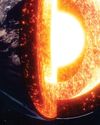
How It Works UK
Giant blobs deep inside Earth are 'evolving by themselves'
We finally know where two giant blobs in Earth's middle layer came from - and they're a mismatched pair.
2 min |
Issue 202

How It Works UK
Scientists break down plastic waste using air
Scientists have developed a new method to break down plastic waste using moisture from the air.
2 min |
Issue 202

How It Works UK
WHY ARE GEMS DIFFERENT COLOURS?
Unearth the gemstone chemistry that results in a spectrum of decorative stones
2 min |
Issue 200
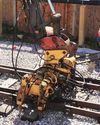
How It Works UK
HOW TRAIN TRACKS ARE LAID
This feat of engineering keeps long carriages in-line and fixed to the ground
2 min |
Issue 200
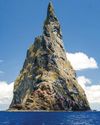
How It Works UK
THE WORLD'S WEIRDEST ISLANDS
Travel across the globe with us to discover unique and beautiful lands dotted across oceans and waterways
3 min |
Issue 200

How It Works UK
MIRROR PHYSICS
Reflect on the science of light bouncing off smooth and shiny surfaces
2 min |
Issue 200
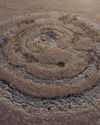
How It Works UK
The 'Stonehenge' in the Golan Heights may not be an astronomical observatory TOM METCALFE
An ancient and enigmatic stone circle in the Middle East may not be a prehistoric astronomical observatory after all.
2 min |
Issue 200
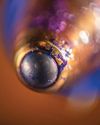
How It Works UK
INSIDE A BALLPOINT PEN
Discover the mechanism that gives this everyday item the power to write
1 min |
Issue 200

How It Works UK
WHAT ARE HEADACHES?
From shooting sensations to dull aches, we explore the many causes of pain around the brain
5 min |
Issue 200

How It Works UK
IS THIS THE HUMAN OF TOMORROW?
HOW WIRES AND CIRCUITS ARE MINGLING WITH BLOOD VESSELS AND NERVES TO CHANGE THE COURSE OF HUMAN EVOLUTION
8 min |
Issue 200

How It Works UK
THE HUNT FOR FARAWAY MOONS
Astronomers are looking for moons outside our Solar System that may have even more chance of hosting life than the planets they're orbiting
8 min |
Issue 200

How It Works UK
HOW THATCHED ROOFS ARE BUILT
Learn all about this historic building method that masterfully tops roofs with layers of dry vegetation
2 min |
Issue 200

How It Works UK
PREDICTING THE WEATHER
To take an umbrella or not? How we get those all-important forecasts
2 min |
Issue 200

How It Works UK
WHY WE HAVE DAYLIGHT SAVINGS
When did some countries start adding and subtracting an hour to their clocks?
1 min |
Issue 200
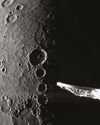
How It Works UK
NEW IMAGES SHED LIGHT ON MERCURY'S NORTH POLE
New photos of Mercury's mysterious north pole reveal a glimpse of the permanently dark, frigid craters that may hold ice dozens of metres thick, even though Mercury is the closest planet to the Sun.
1 min |
Issue 200
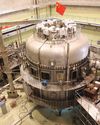
How It Works UK
China's 'artificial Sun' shatters a nuclear fusion record
China's reactor has broken its own world record for maintaining superhot plasma, marking another milestone in the long road towards near-limitless clean energy.
2 min |
Issue 200
How It Works UK
The 'Stonehenge' in the Golan Heights may not be an astronomical observatory
An ancient and enigmatic stone circle in the Middle East may not be a prehistoric astronomical observatory after all.
2 min |
Issue 200
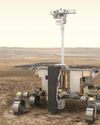
How It Works UK
THE ESA PLANS TO LAUNCH AN ADVANCED MARS LANDER IN 2035
The European Space Agency (ESA) wants to develop key technologies for a Mars surface lander by the mid-2030s.
1 min |
Issue 200
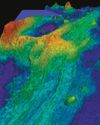
How It Works UK
An undersea volcano off the Oregon coast could erupt this year
An undersea volcano off Oregon's coast will probably erupt in 2025. The volcano, known as Axial, is a seamount 300 miles west of Cannon Beach, Oregon.
2 min |
Issue 200
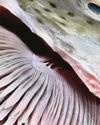
How It Works UK
Did our outer ears come from ancient fish gills?
Human outer ears may have evolved from the gills of prehistoric fish. Gene-editing experiments indicate that cartilage in fish gills migrated into the ear canal millions of years ago during the course of our evolution.
2 min |
Issue 200
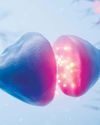
How It Works UK
The speed limit of human thought is ridiculously low
How fast do humans think? It's slower than you might expect.The peripheral nervous system, the network of nerves that delivers information between the brain and the body, takes in environmental information at over a billion bits per second, a speed comparable to a lightning-fast internet connection.
2 min |
Issue 200

How It Works UK
A new database reveals how DNA mutations trigger genetic diseases
Scientists have created a mega-database revealing how half a million different DNA mutations generate errors in proteins in humans.
2 min |
Issue 200
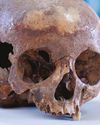
How It Works UK
The skull of Cleopatra's sister' actually belongs to an 11-year-old boy
A skull long assumed to be from Arsinoë IV, Cleopatra’s half sister, is actually from an adolescent boy who had a genetic disorder.
2 min |